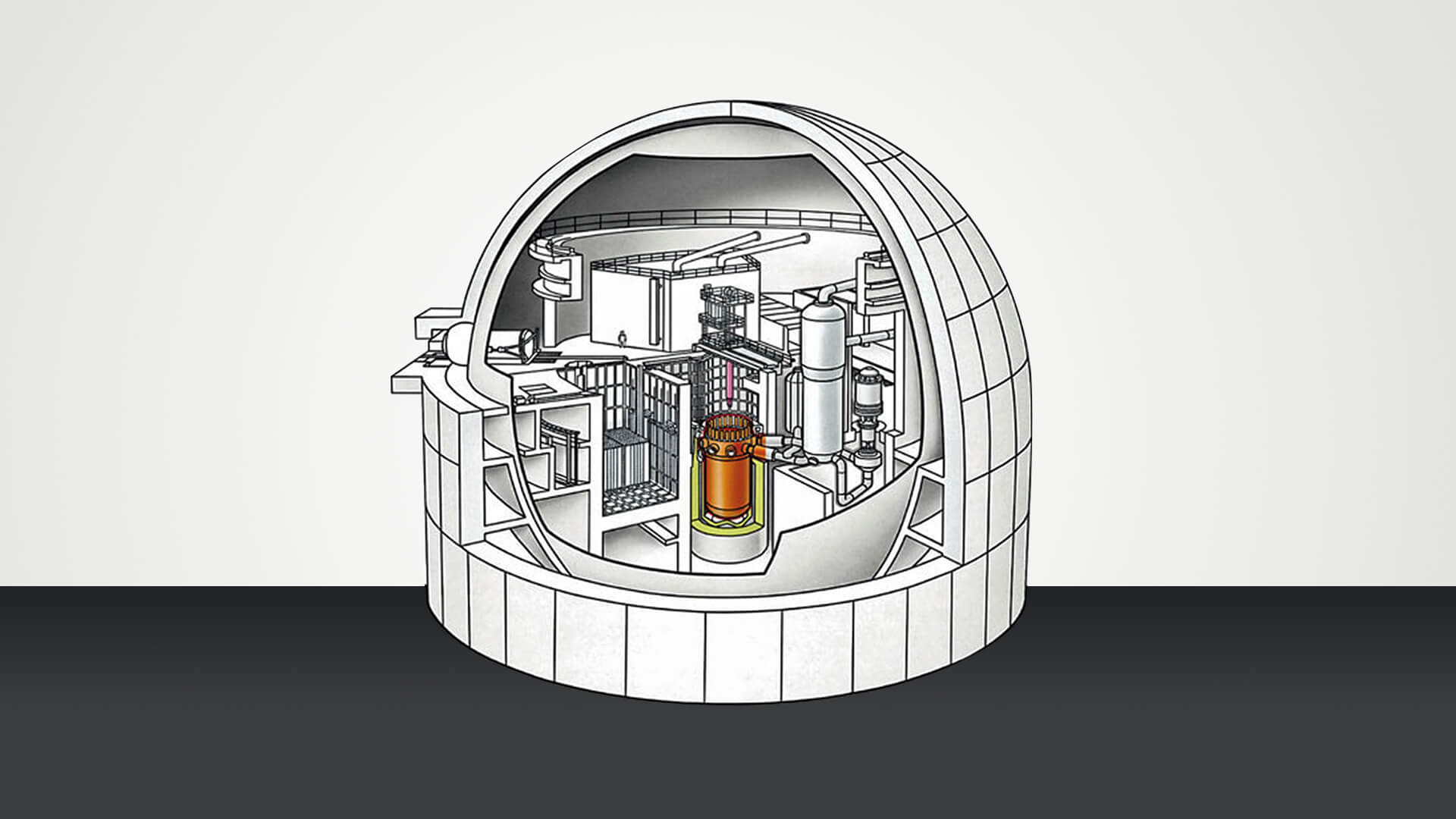3D activation calculation method for the decommissioning of nuclear power plants: “Monte-Carlo” concept for success
Most recently for the Mülheim-Kärlich nuclear power plant: With the successful completion of the activation calculations for this nuclear power plant, Siempelkamp NIS created the prerequisites for successful decommissioning. Mülheim-Kärlich is one of a number of nuclear facilities (pressurized water and boiling water reactors) whose activity inventory could be successfully calculated with the new 3D activation calculation method developed by Siempelkamp NIS.
Challenges in decommissioning
The planned decommissioning of all nuclear facilities in Germany due to the energy transition and the dismantling of international nuclear power plants pose considerable technical and economic challenges for the operators. For the decommissioning of a nuclear power plant, precise knowledge of the radioactive inventory of all components resulting from decades of operation of the plant is required. On the one hand, this is required for the decommissioning license, on the other hand, it is economically impracticable to carry out sampling measurements everywhere in the plant and for each individual component. For this reason, exact calculations of the radioactive inventory of all components are indispensable with respect to a safe and economic decommissioning planning.
Innovative calculation method
To achieve this, Siempelkamp NIS Ingenieurgesellschaft mbH developed an innovative new calculation method based on three-dimensional simulation software for nuclear facilities called MCNP, which was invented in Los Alamos / USA. It makes it possible to calculate the radioactive inventory of the power plant with a high level of detail. In addition to the detailed realistic modelling of the 3D geometry, this new method includes, for the first time, the entire performance history of the plants running for several decades with precisely all used fuel elements. This procedure is now implemented as standard.
The calculation method makes it possible to make predictions regarding the radioactive inventory at every point in the plant with previously unattained accuracy, even in the long-term temporal preview. This makes it possible to determine the smallest levels of activations, even those below the limit of naturally present radioactivity, for the reactor pressure vessel including all internals – this also includes the components further outside, such as the biological shield and loop lines up to the steam generators.
Siempelkamp NIS Ingenieurgesellschaft mbH has already successfully applied the new process on an international level for the pressurized water reactor at the Krško nuclear power plant in Slovenia and within Germany for the two reactor units of the Biblis plant (RWE Power, pressurized water reactors) and the Isar 1 nuclear power plant (PreussenElektra, boiling water reactor) – now also for the pressurized water reactor at the Mülheim-Kärlich nuclear power plant (RWE Power).
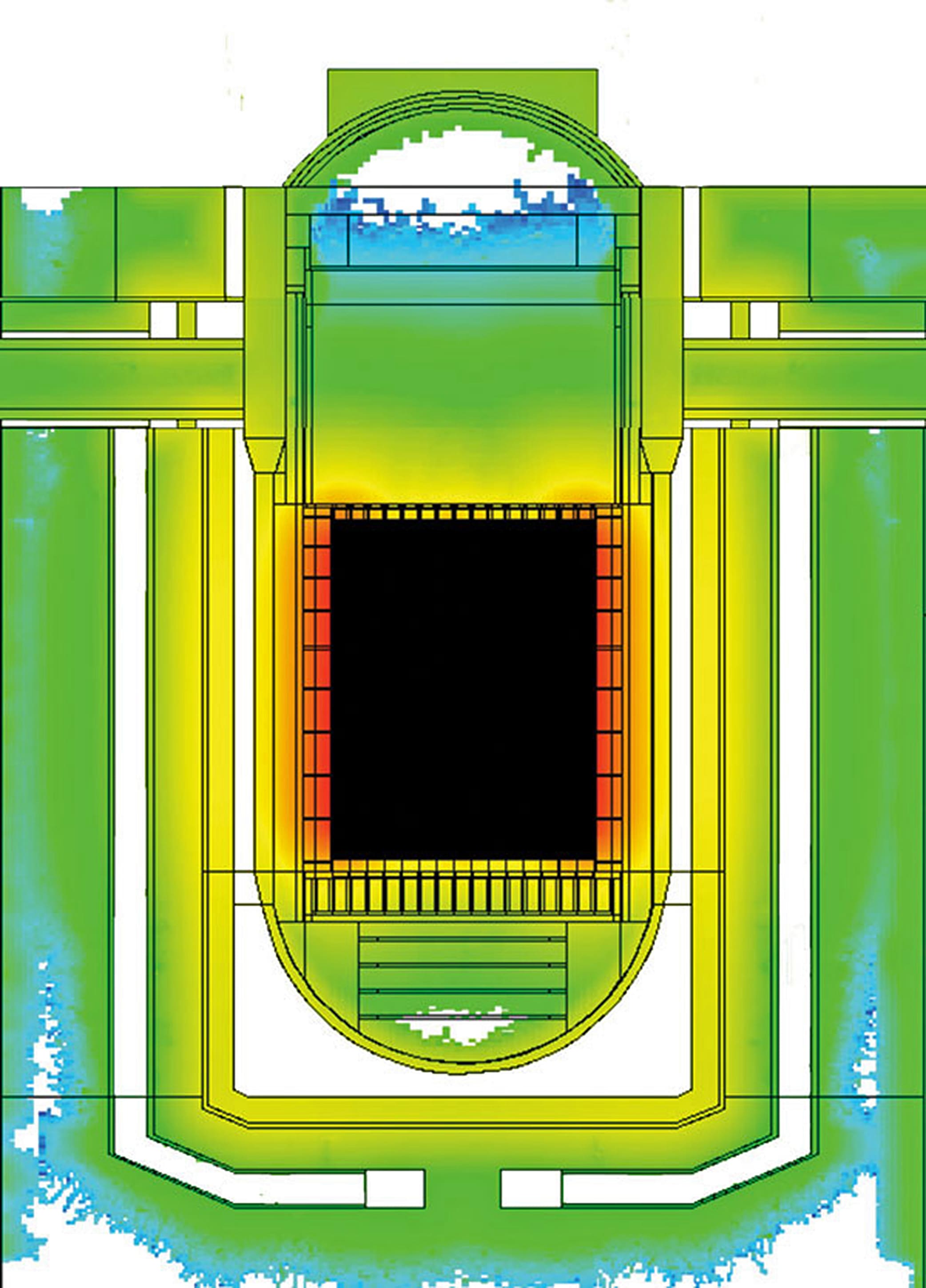
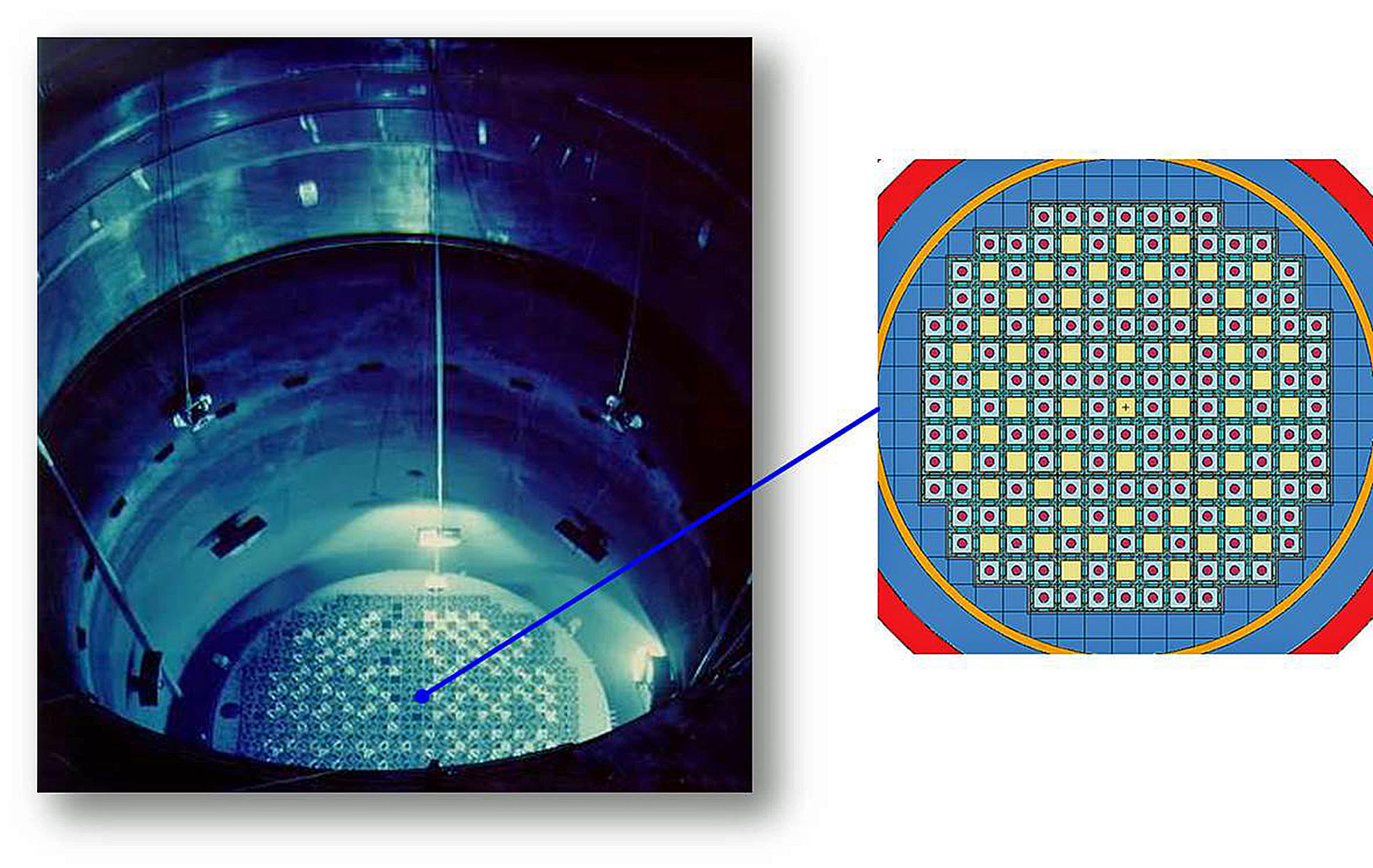
Accurate results, low overall activity
It was found that the new 3D calculation method delivers more accurate results than the previously used 2D calculation methods: At the Mülheim-Kärlich nuclear power plant, the total activities were 4 times lower, in the case of Biblis even almost 10 times lower. “This is important because the nuclear disposal of nuclear power plants is very costly. The operation of a nuclear power plant leaves behind radioactive building structures and internals which must first be dismantled and then disposed of as radioactive hazardous waste in specially designed containers,” explains Dr. Imrich Fabry, Project Manager Activation Calculations at Siempelkamp NIS.
Large savings potential
Compared to previous planning calculations, considerable savings in cast iron containers can be achieved with the new 3D activation calculation method when planning the dismantling, since a much larger proportion can be classified as “medium-activated” or even as conventional waste. “Medium” or “weakly activated” waste is disposed of in considerably cheaper containers. In the case of Biblis, this corresponds to savings of around 30 million euros.
The Siempelkamp NIS 3D activation calculation method – innovation thanks to the Monte Carlo Method
Siempelkamp NIS has developed its own new 3D activation calculation method based on the Monte Carlo method (see info box). The method performs computer calculations of the transport of nuclear radiation (here neutrons), which is generated during the operation of the nuclear facility, through complex building structures in three-dimensional geometry. Thus it is possible to exactly simulate the sometimes very long path of a single neutron through all complex building structures and different materials on its way – exactly as it actually occurs in nature.
Activity atlas
As a result it is possible to make every location in the model of the reactor accessible and to illuminate complex structures in high resolution – e. g., reactor pressure vessels, core internals or structures located further out such as the biological shield or reactor coolant pipes. In particular, neutron scattering – also known as neutron streaming effect – can be made visible in remote areas. This 3D computational model is the prerequisite for an “activity atlas”, which represents a kind of relief map of the entire reactor.
New is the combination of a high-resolution, complex 3D reactor model with the simultaneous consideration of the operating history of the plant. In the case of Biblis, this was 39 years since commissioning. With the successful connection of the operating side with the dismantling side in the activation calculation, Siempelkamp NIS broke new ground. “Only this combination makes it possible to calculate the activity inventory of a plant with unprecedented accuracy. For this to work, the Monte Carlo program had to be modified and the calculation code partially reprogrammed,” describes Dr. Fabry.
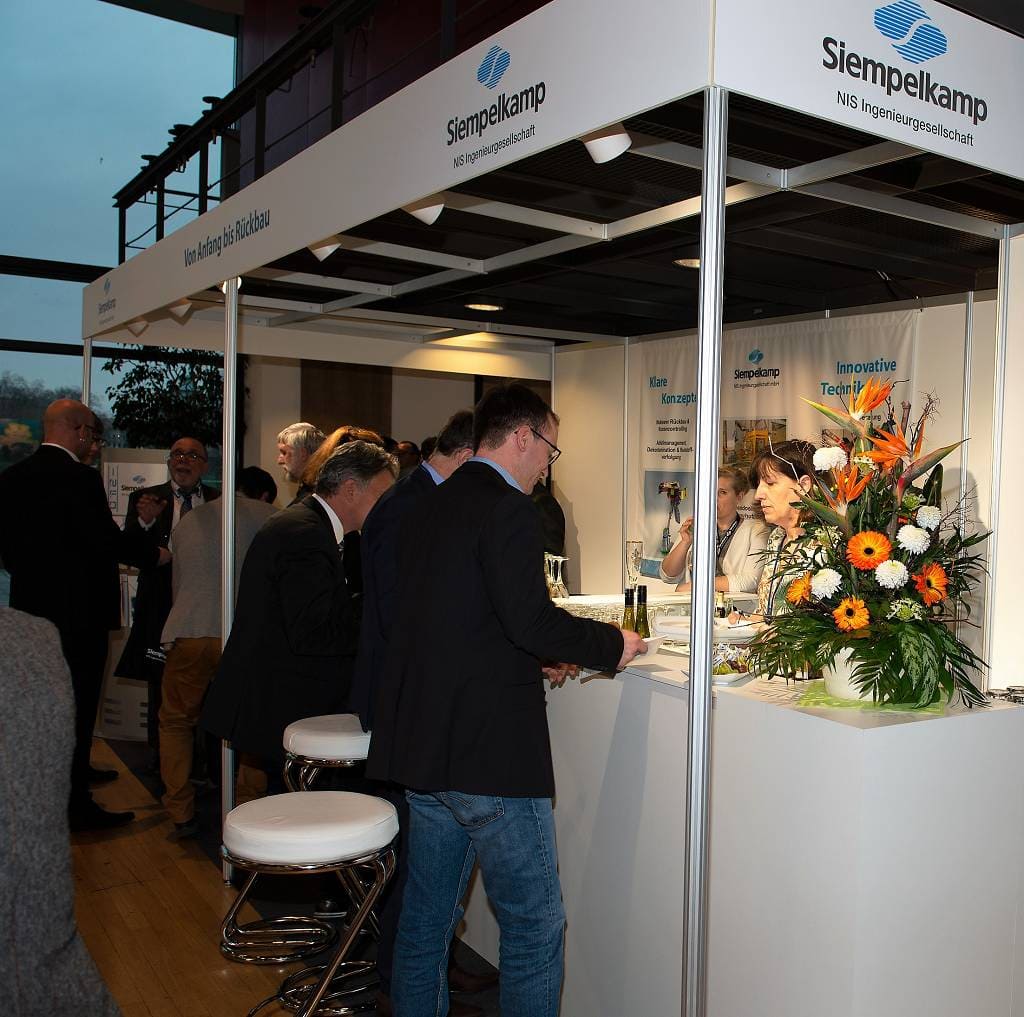
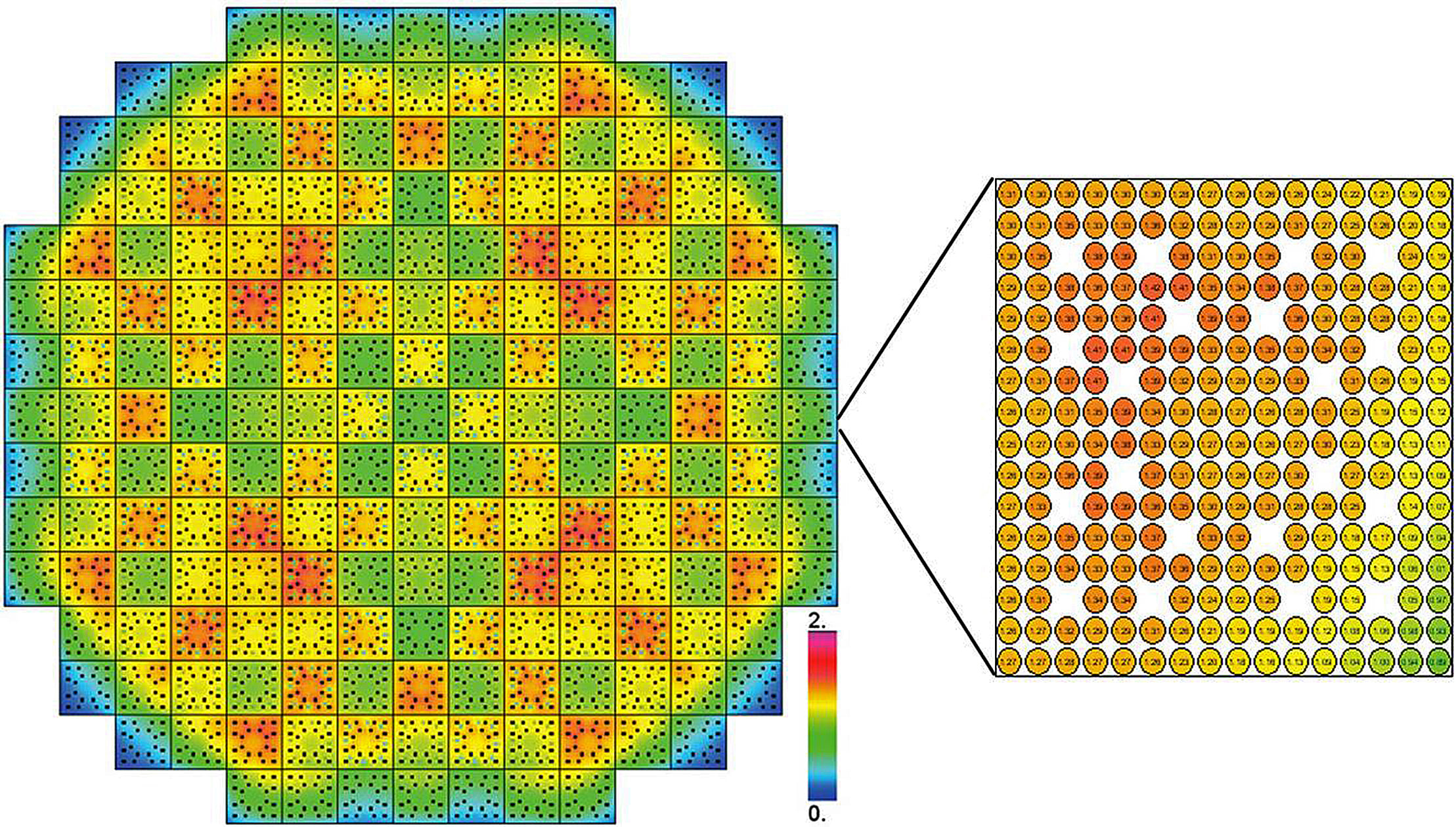
Experience leads to optimization
A reactor unit is covered in such a calculation model with approx. 100,000 “detector cells” each. The neutron flux emerging from the reactor core is simulated during the operating years and the number of neutrons arriving in these detector cells is registered over time. This information is used to calculate the activity in each detector cell. The model of such a reactor to be calculated will be developed in close cooperation with the dismantling experts at Siempelkamp NIS. The experience gained in previous decommissioning projects will be incorporated into the modelling phase of the 3D activation calculation procedure. In the case of the reactor pressure vessel, the grid arrangement of the detector cells is harmonized with the dismantling and packaging strategy. As a result, the number of containers required is optimized.
Finally, the results of the activation calculations are stored electronically in an “activity database”. In this way, the activity values can be determined for any location and time in the reactor.
Intelligent calculation methods and parallel processing save time
The Monte Carlo calculation method is so accurate because the entire transport of a single neutron with all its complex physical reactions is always simulated throughout the entire plant. However, this has its price: only if a large enough number of such neutrons are started is the calculation result accurate enough at the desired location. It is a stochastic method that combines elements of statistics with probability theory.
Advanced process
Since the objective is to calculate the radioactivity in the entire plant, the computing effort of such a Monte Carlo calculation is immense. For one reactor unit a single standard desktop PC would have to calculate for about two years to accomplish this task. The computing time can only be reduced to a few weeks thanks to intelligent calculation methods (variance reduction). With these highly developed methods, the trick is to transport neutrons preferably to locations in the reactor building that are rarely illuminated under normal circumstances. This does not change the result of the calculations. Parallel processing, i. e. the distribution of the calculations over several computer cores, helps to support this.
In this way, it is possible to obtain results that cannot be achieved with conventional calculation methods; for example, the (radio)activity originating from the reactor core is attenuated by as many as 15 orders of magnitude to the outer end of the bioshield. This means that practically no measurable radiation is emitted from the biological shield (for comparison: 15 orders of magnitude correspond to the ratio between the diameter of a hair and the diameter of the sun). On the other hand, the calculations also show that the reactor vessel head and the reactor coolant lines are activated from the outside by neutron streaming.
Minimize dose uptake
These results make it possible to identify “hotspots” (areas of particularly high radioactivity) that dismantling personnel can avoid. Therefore, the dose uptake for the personnel involved in the dismantling can be minimized and the amount of waste for the final disposal can be precisely determined. This enables plant operators to plan their costs with a high degree of certainty. The newly developed process thus offers an effective tool for the safe and economic planning of the dismantling with great savings potential for the operators.
The validation of the newly developed calculation method – i. e. the test of the validity of the calculation results – was carried out at Biblis A in 2017 using local dose measurements. The results showed there was an excellent match between calculation and measurement.

Monte-Carlo method for new construction projects
The experience gained from previous projects can even be used for new construction projects of nuclear power plants: The high-resolution calculations make it possible to see which remote areas in the reactor building are activated by neutron bombardment. Thus, recommendations can be given for better shielding or alternative building materials which are only activated to a small extent by neutron bombardment. As early as 2018, Siempelkamp NIS could use the experience gained from the activation calculations in a first project for the planning of the new construction of the PALLAS reactor (Netherlands), which is to produce important isotopes for medicine in the future. This was presented by the NIS team in March at KONTEC 2019, the International Symposium on the Conditioning of Radioactive Operational and Decommissioning Waste. Siempelkamp NIS is well positioned with its 3D activation calculation method to support German and international operators of nuclear power plants in cost-efficient decommissioning and even new construction planning.
What can “Monte-Carlo” offer?
Monte Carlo simulations are used when analytical formulas fail to evaluate natural processes or when their solution is too complex. Difficult questions in physics, in the world of finance and much more can be answered with Monte Carlo methods and are therefore used in these areas.
The method originates from stochastics, a branch of mathematics, and was developed by the physicists J. v. Neumann, Metropolis and Ulam as part of the Manhattan Project (Los Alamos, USA). It is based on the very frequent realization of random experiments. With the help of the probability theory, problems are solved numerically, relying on the law of large numbers: If a random experiment is carried out repeatedly under the same conditions, the relative frequency increasingly approaches the probability of the random experiment. The random experiments (in the case of activation calculations, a large number of neutrons simulated along their entire path) are performed by generating computer-generated random numbers.
When computers did not yet exist, sequences of random numbers from the Monte Carlo casino were used – hence the name of the method. If such a Monte Carlo program as MCNP used by NIS is also combined with the physical data of the scientific research of the last 80 years, this method is superior to all others in accuracy. The data are provided by international organizations such as the Nuclear Energy Agency (NEA) within the OECD and the International Atomic Energy Agency (IAEA).

